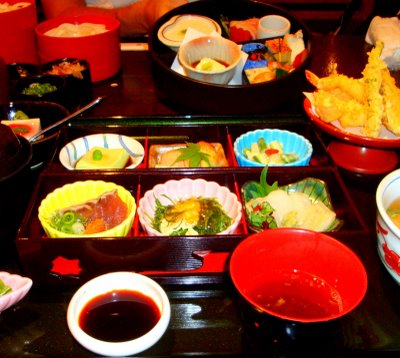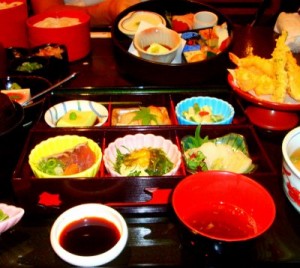Food additives make food experience a lot tastier, more aromatic, more colorful or more nutritious. A well known food flavor enhancer is the monosodium glutamate or MSG. It is a food additive that is widely used in the whole world.  It is the sodium salt of the common amino acid, glutamic acid. It is used widely especially Asian restaurants. This is once considered and used solely in Chinese cuisine as food additive but is now used in all fast food restaurants and is added to many types of food. You can find this usually in most ingredients list, indicated on the nutrition facts of a food packaging.
It is the sodium salt of the common amino acid, glutamic acid. It is used widely especially Asian restaurants. This is once considered and used solely in Chinese cuisine as food additive but is now used in all fast food restaurants and is added to many types of food. You can find this usually in most ingredients list, indicated on the nutrition facts of a food packaging.
MSG possesses a basic tasted, termed umami taste that is independent of the well-known sweet, salty, bitter, and sour tastes. The umami taste is everything in between that has balance to the taste. Monosodium glutamate was first isolated in 1907 by Japanese Kikunae Ikeda and was patented two years later by the Ajinomoto Corporation.
MSG Symptom Complex
Could the intake of foods containing monosodium glutamate affect you? In a few sensitive individuals, monosodium glutamate produces adverse reactions known as the MSG symptom complex. It is once known also as the Chinese restaurant syndrome. Many anecdotal reports of adverse reactions to foods containing monosodium glutamate existed Symptoms may vary among individuals but the common are nausea, burning sensations, chest and facial flushing or pain, and throbbing headaches and migraines. Other symptoms reported after eating MSG containing foods are anxiety, depression, mood swings, dizziness, cramps, confusion, palpitations, sweating, excessive thirst, sleepiness, difficulty in concentrating, hyperactivity, restlessness, swelling, skin rashes. A probable link lines in elevated blood levels of the MSG component, glutamate, which is a component known to stimulate the release of some pituitary hormones in experimental animals. Meals containing carbohydrate seem less likely to induce adverse effects of MSG than meals of broth, so people dining in Asian restaurants and potentially sensitive people should try ordering dishes such as soups that contain noodles and eat plenty of rice with many main dishes to provide carbohydrate source, as do Asians themselves. MSG symptom complex is the acute, temporary and self-limiting reactions experienced by sensitive people upon ingesting a large dose of MSG.
A person having an adverse reaction to MSG or any other ingredient that contains processed, free glutamic acid is called MSG-sensitive.
 Extensive studies and investigation were done and claimed that it is safe for adults to use (except for people who react adversely to it, of course), but it is kept out of foods for infants because very large doses have been shown to destroy brain cells in developing mice. Infants have not yet developed the capacity to fully exclude such substances from their brains. It is a food additive that is deemed to be safe but manufacturers and distributers of foods containing MSG are required to indicate it on their labels and ingredients list so that consumers will be aware that the food they are about to eat are containing monosofdium glutamate.
Extensive studies and investigation were done and claimed that it is safe for adults to use (except for people who react adversely to it, of course), but it is kept out of foods for infants because very large doses have been shown to destroy brain cells in developing mice. Infants have not yet developed the capacity to fully exclude such substances from their brains. It is a food additive that is deemed to be safe but manufacturers and distributers of foods containing MSG are required to indicate it on their labels and ingredients list so that consumers will be aware that the food they are about to eat are containing monosofdium glutamate.
Food sensitivity as opposed to Food Allergy
A food allergy is an adverse immune response to a food protein. In a food allergy, the immune system produces antibodies and histamine in response to a particular food ingested. A food sensitivity reaction is a sensitivity to food items that is not a food allergy and does not involve the immune system. To this date, MSG is not recognized as an allergen. Allergy as opposed to food sensitivity is an antibody response to the immune system and MSG is not known to cause any such response.
Hidden Food Sources of MSG
As a consumer, being keen in reading product labels and nutrition facts is a must to protect you. A lot of people fail to realize that MSG is found in the foods they buy. Some may be hidden in some ingredients. Monosodium glutamate is often combined with other ingredients or renamed. It is a must to know that a product containing hydrolyzed protein means it contains MSG. Some product labels say their products are “MSG free,†and is safe to eat but when you look at their ingredients list, glutamic acid can be read on it. Examples of ingredients that are often found in products that contain MSG are calcium caseinate, textured protein, glutamate, glutamic acid, monopotassium glutamate, gelatin, sodium caseinate, yeast nutrient, autolyzed yeast, hydrolyzed corn gluten, hydrolyzed soy protein, hydrolyzed wheat protein, vegetable protein, malt extract, maltodextrin, soy protein isolate, citric acid, natural pork flavoring, natural beef flavoring, natural chicken flavoring, barley malt, soy sauce stock, soy sauce extract, ultra-pasteurized, bouillon and broth, protease, pectin, whey protein, whey protein isolate, and fortified protein.

